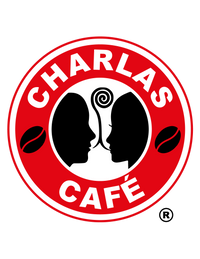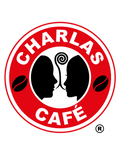How to recreate a coffee shop cappuccino at home
CAPPUCCINO IS ONE OF THE MOST POPULAR AND WELL-KNOWN DRINKS IN THE WORLD
This winning combination of milk foam and espresso is a favorite of many and has been the inspiration for many other coffee and milk-based drinks.
While the drink dates back to the early 19th century, the traditional Italian cappuccino emerged in the 1930s, before the invention of the modern espresso machine, meaning you don't need one to create a classic cappuccino at home.
To explore how you can make this delicious drink outside of your local coffee shop, I spoke to three cappuccino experts: Tosca Cesaretti and Misha Bussemey, the co-owners of Texas-based Springtown Roasters, and Chiara Bergonzi, a three-time Italian latte art champion, SCA instructor, and international judge.

HOW TO MAKE A CAPPUCCINO?
A cappuccino is made up of three basic parts: measured proportions of milk, coffee, and milk foam. In the classic Italian recipe, the textured milk is mixed into the coffee, rather than remaining on top. While there are variations in foam and proportions, these three parts are always the same.
Tosca and Misha say: “Although the ratio is one part coffee to two parts milk, the milk is split into one part steamed milk and one part foam.” However, they say variations are acceptable, as long as the end result is to the liking of the drinker.
In her book, Latte Art, Chiara says: “The creamy effect of the foam [of the cappuccino] should create a rounded and comforting drink, which caresses the palate, with a pleasant temperature of between 60 and 65°C.”
According to Tosca and Misha, much more than proportions and ratios separate cappuccino from other milky coffees. They believe that drinking a good cappuccino is truly a sensory experience; it combines the visual effect of an attractive foam with the sweet aroma of creamed whole milk coming into contact with the coffee.
In Italy, a cappuccino is a morning drink, prepared to be enjoyed quickly so that it doesn’t lose its creamy, bubble-free consistency. Traditionally, it is prepared with less steamed milk and more foam, which gives it a more intense flavour. The characteristic of a traditional Italian cappuccino, according to Chiara, is “the white crown on top, surrounded by a ring of coffee”.
Choosing the right cup to serve your cappuccino is also important. If you choose the wrong cup, your cappuccino could lose heat too quickly. According to the Istituto Nazionale Espresso Italiano (INEI), a cappuccino cup should have a wide rim and a narrow base.
For a homemade cappuccino, however, Chiara believes that size is not a real issue. “A lot of people use cups that are too big or too small,” she says. “That’s fine, keeping the proportions right is what really matters.”

HOMEMADE METHODS FOR MAKING CAPPUCCINOS
In a coffee shop, cappuccinos are prepared with specific professional-grade equipment. However, it is not necessary to have these tools to prepare it at home.
If you don't have a barista or espresso machine at home, you may want to use a coffee-making device, such as a moka pot or Neapolitan coffee maker. These alternatives are less expensive, and can also be used to produce espresso-like coffee shots.
To make cappuccino at home, Tosca and Misha recommend a moka pot. “The coffee should be really strong, because we’re going to add milk. The moka pot is great for this, as you get all the natural oils and fats, all the good stuff that exists in coffee.”
According to Tosca and Misha, a French press is also a suitable alternative. However, when preparing coffee for a cappuccino with a French press, the proportions of coffee and water should be adjusted. Tosca and Misha's advice is to reduce the amount of water until you reach a concentration you are happy with.
It's worth noting that you may need to adjust other variables, such as coffee variety, grind size, and brewing time, to find a recipe that's right for you. It's important to be prepared to experiment and perfect your recipe with several attempts.
If you decide to invest in a machine, you can choose from a wide variety with different functions. Chiara says that the right machine for a cappuccino has a good, steady pressure for the coffee, as well as a steam wand for frothing the milk.
No matter which method you choose, what matters for a cappuccino is that you produce a very concentrated coffee. When using some brewing methods, such as pour-over, it can be very difficult to achieve this. “Filters take away the body of the coffee, which is exactly what we want from a cappuccino,” say Tosca and Misha.

CHOOSING COFFEE
Before you start making a quality cappuccino, you'll need to carefully choose the right coffee. You should try to buy freshly roasted beans and, if possible, get recommendations for your choice from a local roaster. Tosca and Misha advise choosing a medium roast and using a fine grind, as if you were making an espresso. This is the ideal size for the moka pot.
In the end, the grind size you use will vary depending on how you brew your coffee. Chiara says trial and error is key. Even with lower-quality grinders, you can experiment with different grind sizes and brewing methods until you find something you like.
Additionally, she says that pre-ground coffee can work, as long as it's very good quality and reasonably fresh. Those who don't have or use a grinder can ask the roaster to grind the coffee to the size of their choice. While fine coffee is ideal for the moka pot, coffee for the French press should be coarser. If you have questions, it might be worth talking to a roaster.

THE RIGHT TYPE OF MILK
Creating perfect cappuccino foam is all about chemistry. There are several different factors that play a role, from the quality of the milk to the heating temperature. While a thermometer will be helpful, Tosca and Misha explain that choosing the right type of milk is an important first step.
“Essentially, a good organic whole milk is the best. It has the highest amount of fats and that’s what you really need to get the bubbles in the foam.” However, you do need to make sure you don’t overheat the milk, as this can kill the proteins and make your foam too light.
For those who want to create a perfect, barista-level cappuccino at home, the Specialty Coffee Association (SCA) offers a guide to temperature. The SCA recommends heating milk to approximately 50-70°C (122-158°F).
ACHIEVE THE MAGIC FOAM
The simplest way to froth milk is to use a saucepan and a whisk. Simply heat the milk on the stove and when it starts to boil, turn off the heat and start whisking. If you have a thermometer, you should remove the milk from the heat when it reaches a temperature of around 70°C, as recommended by the SCA. Keep whisking until the milk becomes foamy and thicker, and you will soon have froth.
As for plant-based milk alternatives, soy and almond milk also produce good foam. But Tosca and Misha do not recommend coconut or cashew milk, as “they are very diluted and watery.”
Other options include heating the milk on the stove and then putting it in a blender until it becomes foamy. Just be careful that the milk is not too hot, as too much pressure could damage your blender.
Believe it or not, the French press can also be used to froth and texture milk. This is the method that Chiara recommends. She says that using very cold milk before heating it in a container helps to produce a nice foam. Once it's heated, you simply pour the milk into the French press and then raise and lower the plunger until it foams.
To separate steamed milk from foam, all you need to do is slowly pour it into a separate container, and gently shake it to remove any bubbles. Often, baristas remove air bubbles and separate the foam by tapping the pitcher against the counter, but if not done carefully, it can be a mess.
Another “semi-professional” option is to buy a milk frother, and there are a variety of options available. However, if you want something more compact and affordable, you can invest in a manual texturizing wand. Tosca and Misha even describe it as “great to take with you when you go on holiday.”

OTHER VARIATIONS
Following a rigid recipe with set proportions means you have more freedom to experiment with your cappuccino in other ways. For example, you can add the traditional pinch of cinnamon or cocoa powder, which dates back to the early 20th century. Today, in some European countries, cappuccinos are even made with cream and sugar, rather than textured milk and foam.
Misha adds cinnamon, cardamom, and nutmeg, but says the exact recipe “depends on [how she feels] that morning.” Tosca has an even more detailed recipe that she calls “The Mini Honey”: “I make the cappuccino with very strong coffee and sweeten it with a spoonful of honey and add a pinch of salt. That’s my little secret!”
No matter how you choose to brew your coffee or texture your milk, it's important to create a cappuccino you love. You'll need to adjust and tweak your recipe no matter which method you choose. Trial and error will help you develop a perfect recipe.
The most important thing? Remember to enjoy the process. As Misha and Tosca say: “Try to have fun. Experiment with everything.”
Image credits: Tosca Cesaretti, Cris Flores, Gaia Schirru
Written by: Isabelle Mani SanMax
Translated by: Laura Fornero. Translation edited by: María José Parra.
Courtesy and credits: PDG Español
Café Mexico Talks.











Leave a comment